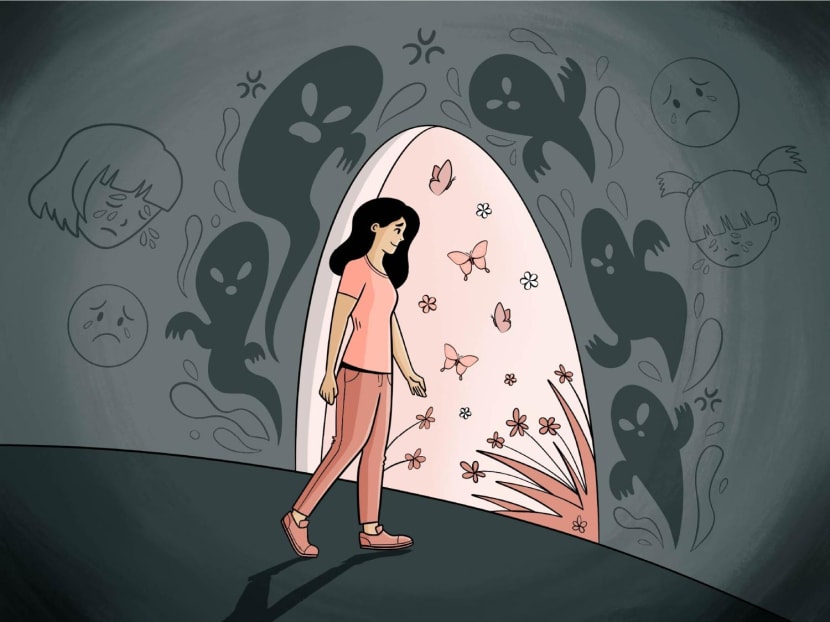Addressing Childhood Trauma
Childhood trauma can forever shape how we see ourselves, our relationships, and the world around us. Children undergo constant brain development, it is particularly occurring during the first three decades of life. For this reason, childhood trauma can be very complex. Children who don’t feel safe in infancy have trouble regulating their moods and emotional responses as they grow older (Van der Kolk, 2014). To understand childhood trauma, it is important to understand the neurobiology of trauma. The neurobiology of trauma is essential to understand when discussing childhood trauma because it is important to understand what is physically occurring within the human body when undergoing trauma. There is growing evidence that exposure to even a single event can alter the way one’s brain functions (Rousseau, 2024). The human brain consists of the following:
Brain Stem: Responsible for our most primitive functions and found in all mammals. The most important functions of the brain stem include unconscious processes such as breathing, heart rate, respiration, and blood pressure.
Cerebellum: Responsible for the coordination of more complex processes, such as posture and blinking.
The Four Brain Lobes: Parietal Lobe, Temporal Lobe, Occipital Lobe, and the Frontal Lobe.
Frontal Lobe: The frontal lobe generates behaviors, forms personality, and maintains verbal fluency; it is the most advanced lobe.
(Rousseau, 2024)
The frontal lobe plays a crucial role in emotional regulation. Childhood trauma can affect the development of the prefrontal lobe in a child. Someone who has experienced severe trauma may have a smaller volume of or developmental issues with the prefrontal cortex. This can lead to hypersensitivity to stressful environments, an inability to self-regulate emotions, and increased levels of fear and anxiety (Rousseau, 2024).Due to this, the childhood mind is very fragile. This could lead to better understanding when working with justice-impacted youth as it could possibly help understand certain behaviors. What children are exposed to or experience at a young age can be detrimental. Childhood trauma can present itself in different ways, such as bullying, medical trauma, sexual abuse, traumatic grief, and early childhood trauma (The National Child Traumatic Stress Network). For this reason, it is crucial for a child to have a supportive and safe relationship with someone in their life where they feel comfortable speaking openly about anything.
The largest study on childhood trauma, the Adverse Childhood Experiences (ACE) study, revealed much information on the topic. It was a collaboration between the CDC and Kaiser Permanente, with Robert Anda, MD, and Vincent Felitti as co-principal investigators. The study generally revealed that traumatic life experiences during childhood and adolescence were far more common than expected (Van der Kolk, 2014). As the ACE score rises, chronic depression in adulthood also rises dramatically (Van der Kolk, 2014). The study found that as the number of ACE categories increased, so did the number of related conditions, such as:
Alcoholism and alcohol abuse
Chronic obstructive pulmonary disease
Depression
Drug use
Heart disease
Liver disease
Risk of partner violence
Smoking
Suicide
Overall decline in quality of life
(Rousseau, 2024)
Childhood trauma can have many negative long-term effects. Therefore, it is important to understand how children can be helped to heal from these effects. Some practices that can aid in healing include yoga, sanctuary mode, sand tray therapy, and trauma-informed behavioral therapy (Rousseau, 2024). TF-CBT (Trauma-Focused Cognitive Behavioral Therapy) is a structured, short-term treatment model that effectively improves a range of trauma-related outcomes in 8-25 sessions with the child/adolescent and caregiver. It addresses many other trauma impacts, including depression or anxiety, cognitive and behavioral problems, improving the participating parent’s or caregiver’s personal distress about the child’s traumatic experience, effective parenting skills, and supportive interactions with the child (About Trauma-Focused Cognitive Behavioral Therapy (TF-CBT) – TF-CBT Certification Program, 2023). Healing childhood trauma is important for enhancing quality of life. It helps individuals move on from experiences where they may have felt helpless, giving them the chance to regain their power and improve their lives. Understanding the foundations of childhood trauma is important within the criminal justice field. We have a responsibility to care and provide rehabilitation and support. Especially to our justice-impacted youth.



References:
Van, K. B. A. (2014). The body keeps the score: Brain, mind, and body in the healing of trauma.
Rousseau, D. Module 2, (2024) BU Learn. Retrieved from https://learn.bu.edu/bbcswebdav/pid-13973861-dt-content-rid-107726427_1/courses/24sum2metcj720so2/course/module2/allpages.htm
Rousseau, D. Module 3, (2024) BU Learn. Retrieved from https://learn.bu.edu/bbcswebdav/pid-13973862-dt-content-rid-107725988_1/courses/24sum2metcj720so2/course/module3/allpages.htm
The National Child Traumatic Stress Network. Trauma types. https://www.nctsn.org/what-is-child-trauma/trauma-types
The ACE Study I: Childhood Trauma and Adult Health. 2015. San Francisco, California, USA]: Kanopy Streaming. Video.
About trauma-focused cognitive behavior therapy (TF-CBT) – TF-CBT certification program. TF. (2023, May 30). https://tfcbt.org/about/
Photos from:
Should you forgive someone who caused your childhood trauma or abuse? here’s what you need to know first for your health’s sake. TODAY. https://www.todayonline.com/features/should-you-forgive-childhood-trauma-abuse-what-you-need-know-first-health-2415816
How to work through childhood trauma. Breeze. https://breeze-wellbeing.com/blog/childhood-trauma/
One comment
Hello, Ashley! Thank you for clarifying childhood trauma! It is a profound topic. I agree with you that traumatized individuals need necessary social support to grow out of their trauma. In the test cards study, the abused children frequently told gruesome and violent stories. These abused children exhibited high levels of arousal and distress, becoming excited and disorganized while narrating their stories (Van der Kolk, 2014).
On the other hand, Noam Saul, the five-year-old boy who witnessed the 9/11 event, coped with the trauma without severe psychological scars because his family provided a calm and loving environment, which helped him recover. Children usually learn from their parents and other family members. It is essential for them to feel loved and supported to handle life’s challenges.
Comments are closed.